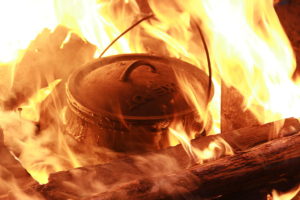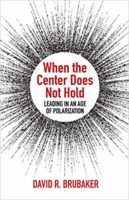High-intensity congregational conflict is brutal on congregational leaders. By the time a congregational conflict has escalated to Level 4 on the Leas scale (of 1 to 5, corresponding to hurricane and tornado intensity scales), congregational leaders inevitably become the focus of the conflict. Even though conflict generally emerges from deeper congregational and societal dynamics, members are likely to assume that leaders’ incompetence must be at least partly responsible.1
Congregational leaders, whether ordained or lay, often feel paralyzed in high-intensity conflict. The initial instinct is generally to downplay or deny the conflict—to “just ignore it.” Leaders often “hunker down” at this stage of a conflict, praying that the storm will eventually pass. When that strategy proves unsuccessful, leaders usually begin searching for a “compromise” or other solution that might placate the contending parties. The sobering reality, however, is that at Level 4 or 5, conflicts seldom offer “win-win solutions.”
How might leaders practice effective conflict management in high-intensity conflict? The most important strategy may be to attend to oneself during the conflict. Family systems theory teaches that leaders’ ability to manage their own anxiety—to respond rather than react to the anxiety of others—determines to a large degree how the congregation will navigate potentially destructive conflict.
The traditional remedies focus on regular exercise and spiritual disciplines. These are important but also familiar, so I chose to identify three lesser-known responses I have observed in successful survivors of congregational conflict.
1. Don’t take it personally (even when it’s intended to be personal)
The reality that high-intensity congregational conflict inevitably focuses on top leaders has torpedoed many clergy careers. Unable to absorb the slings and arrows, many clergy under assault resign rather than resist. While this option may be appropriate in some cases, in most situations the ability of leaders to persist despite personal attacks may allow the congregation to move beyond a focus on the “identified issue” (leadership) to the underlying issue (generally systemic patterns in the congregation itself).
To persist successfully, however, there are two necessary conditions. First, the leader who is under attack must resist becoming defensive. This requires enormous discipline, as the natural human response to an attack is to defend oneself. Yet such defensiveness only increases the focus on the clergyperson as the “source of all our problems.” Second, someone other than the clergyperson needs to assist the congregation in identifying the underlying issues that are driving the conflict. In some cases, this can be a gifted layperson with an ability to do systemic analysis; in other cases, it’s someone outside the system (such as a judicatory official or consultant).
2. Rely on a support group (outside of your congregation)
Every leader under assault needs a safe space to vent, clear his or her mind, and receive wise counsel. For clergypersons enmeshed in a high-intensity conflict, such a group is a sine qua non for personal survival. Of course, a support group needs to be established well before the onslaught begins—as the likelihood of creating such a safe space in a few weeks or even months is remote.
I’ve known pastors and priests who have stayed connected with friends from seminary days, convening on an annual basis. I’ve also talked with rabbis who maintain a close connection with a mentor or spiritual director. In my own life, I’ve been part of three “supper clubs” (in three different communities) the last 35 years that provided both safety and accountability.
3. Rigorously protect your Sabbath (despite protests)
Most clergy have learned over the years to identify a “Sabbath” other than a Saturday or Sunday (when they are focused on enriching the Sabbath experience of others). But whatever day of the week they choose as their personal “Sabbath” there are multiple potential interruptions. Whether parishioners to visit or emails to answer, the temptation for clergy is to allow the Sabbath to be whittled away by the legitimate demands of ministry.
In a high-intensity conflict, the routines of Sabbath keeping become essential. The God of Israel called Moses to Mount Sinai not only to communicate the law, but also to strengthen Moses to deal with opposition. When overwhelmed by demands for healing and teaching, Jesus also regularly “withdrew” from the people to spend time alone with God. In my much more modest ministry, I’ve committed to an annual “silent retreat” at a local Catholic retreat center, a practice that strengthens me for my consulting work with congregations and other organizations.
In addition to regular exercise and daily spiritual disciplines, I’ve observed that these three practices are essential survival strategies for clergy in high-intensity conflict situations. Don’t take it personally, as it probably isn’t about you. Rely on a support group that you joined or formed well prior to the conflict. And rigorously keep your Sabbath.
These practices have no magical power to make the conflict disappear. They will, however, provide you with greater strength for the journey through conflict. Such high conflict experiences, while generally awful, are always temporary. If you’re able to survive the journey, you and your congregation will likely thrive on the other side. But the key is to survive the journey!
David Brubaker has consulted with organizations and congregations in the U.S. and a dozen other countries on organizational development and conflict transformation. He is the author of Promise and Peril, on managing change and conflict in congregations, and When the Center Does Not Hold, on leading in an age of polarization. David recently retired from his role as Dean of the School of Social Sciences and Professions at Eastern Mennonite University, and is now a Professor Emeritus of Organizational Studies.
1Although congregational conflict generally emerges from deeper systemic and societal dynamics, I must acknowledge that in cases of clergy sexual misconduct or personal dysfunctions within the leader him or herself the clergy-person can be not just the focus but also a primary cause of the conflict.



